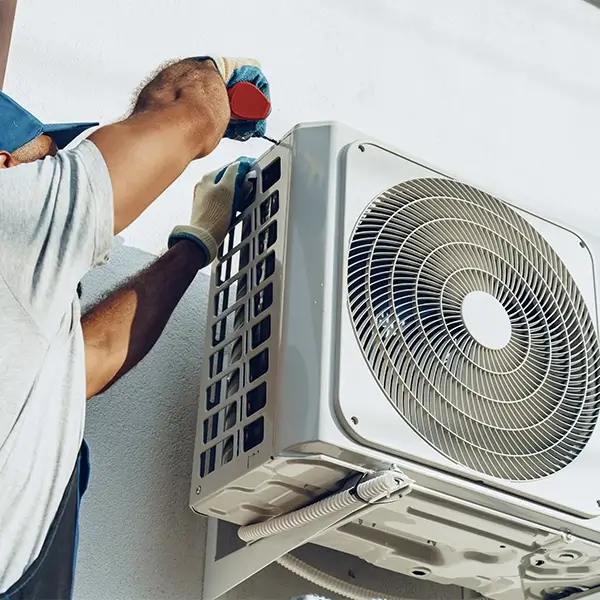Radon is a naturally occurring gas formed from radioactive elements like uranium and radium present in soil. It infiltrates homes through the foundation due to pressure differentials between indoor and outdoor environments. Radon exposure poses serious health risks and is the leading cause of lung cancer behind smoking. On top of that, its levels can vary substantially over time, making routine testing and effective mitigation critical to your safety.
However, radon levels can be impacted significantly by manmade factors, including centralized heating, ventilation, and air conditioning systems, or HVAC systems. Homes and businesses all across the Southwest have HVAC systems that circulate air through their property. While these systems play a crucial role in maintaining the comfort of our homes and businesses, they can also have a direct impact on indoor radon levels and even potentially disrupt mitigation efforts!
The Impacts of HVAC on Indoor Radon
An HVAC system regulates a building’s temperature, humidity, and air quality. It draws in return air, filters it, conditions it by heating or cooling, and circulates the conditioned air through ducts and vents into the living spaces. Controls like thermostats and dampers regulate air flow and temperature. Some systems incorporate air purifiers and humidifiers/dehumidifiers.
Though the impacts are often more pronounced in larger facilities such as schools and hospitals, HVAC systems can inadvertently influence radon levels in residential settings. Among the various smaller mechanisms through which HVAC systems can affect radon levels, the most significant are air distribution and air pressure differentials, impacting both radon levels and mitigation strategies.
Air Distribution
While checking your system monitor periodically is a good way to verify that your mitigation system is functioning properly, the only sure way to know is through testing. When a radon mitigation system is functioning properly, it should be reducing indoor radon levels almost entirely. However, if any aspect of the mitigation system has been damaged, obstructed, or malfunctioning, it may not be able to create proper depressurization beneath the soil, resulting in radon levels increasing.
The EPA recommends homeowners have their homes tested for radon at least once every two years. However, if you are getting any warnings from your system monitor or have made any modifications to your home, it is highly recommended you have your property tested. Our NRPP-licensed and certified Radon Measurement Professionals will not only test your home for radon, but will also perform a thorough multi-point inspection of your radon mitigation system!
Air Pressure Differential
The most common type of radon mitigation system is a sub slab or sub soil depressurization system, which uses a fan to create negative pressure beneath the home’s foundation. This negative pressure draws the radon gas from the soil and vents it outside before it can enter the living spaces. However, the HVAC system’s air handling unit also creates negative pressure within the home when it is operating and drawing in return air.
This negative pressure can work against the radon mitigation system if not accounted for properly during system design and installation. This can result in reducing the pressure differential between the soil and the home’s interior, making it harder for the mitigation fan to draw radon gas from the soil effectively. It can also potentially reverse the air flow direction, causing conditioned air from the HVAC system to be drawn down into the soil rather than the radon exhaust being vented outside.
HVACs & Professional Radon Mitigation
While HVAC systems may pose challenges in managing radon levels, they also offer opportunities for effective mitigation. The key lies in expert oversight from certified radon measurement professionals such as those at Southwest Radon Eliminators. Our radon mitigation experts can meticulously design and implement mitigation systems tailored to your specific needs, while accounting for the dynamics of your HVAC system.
